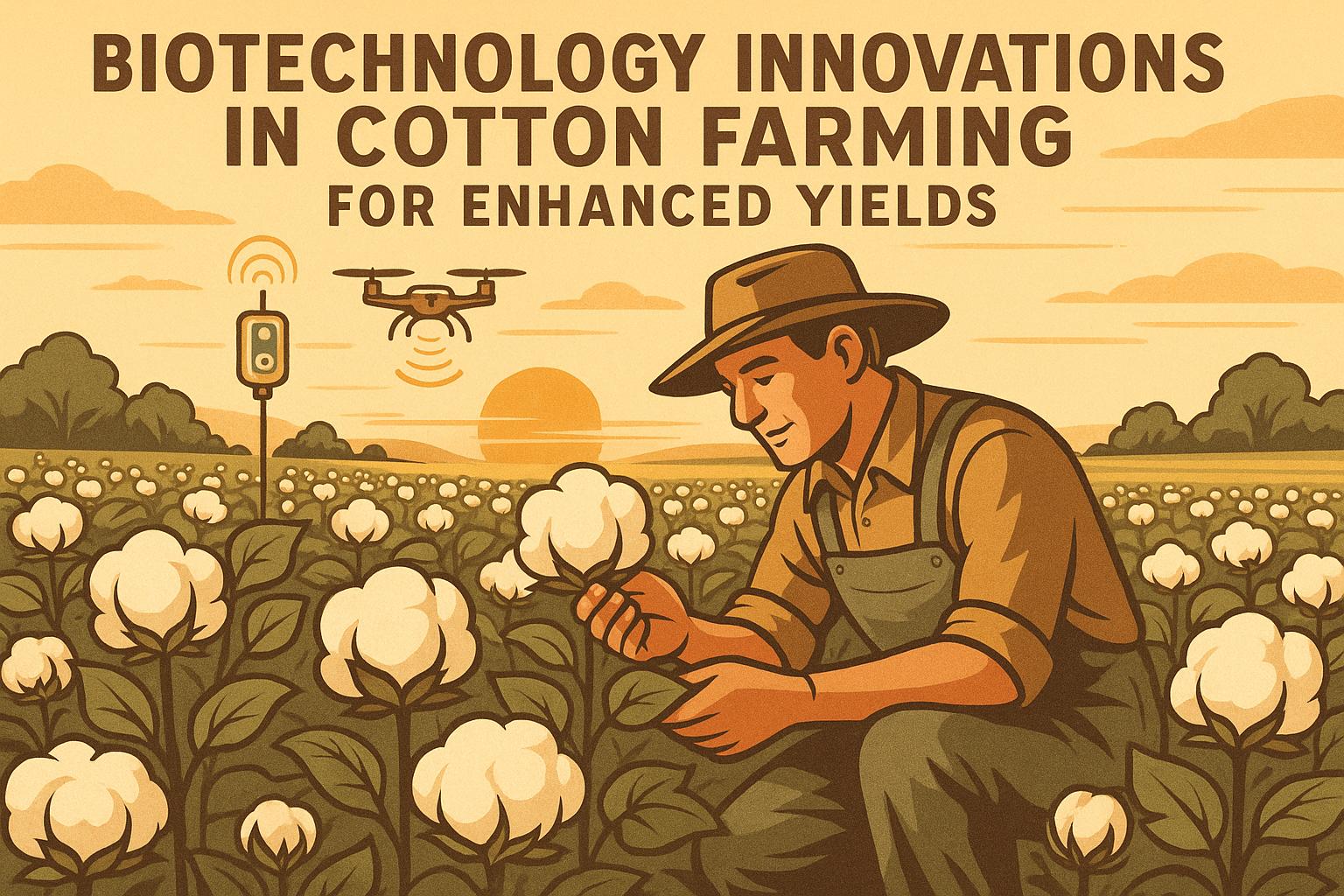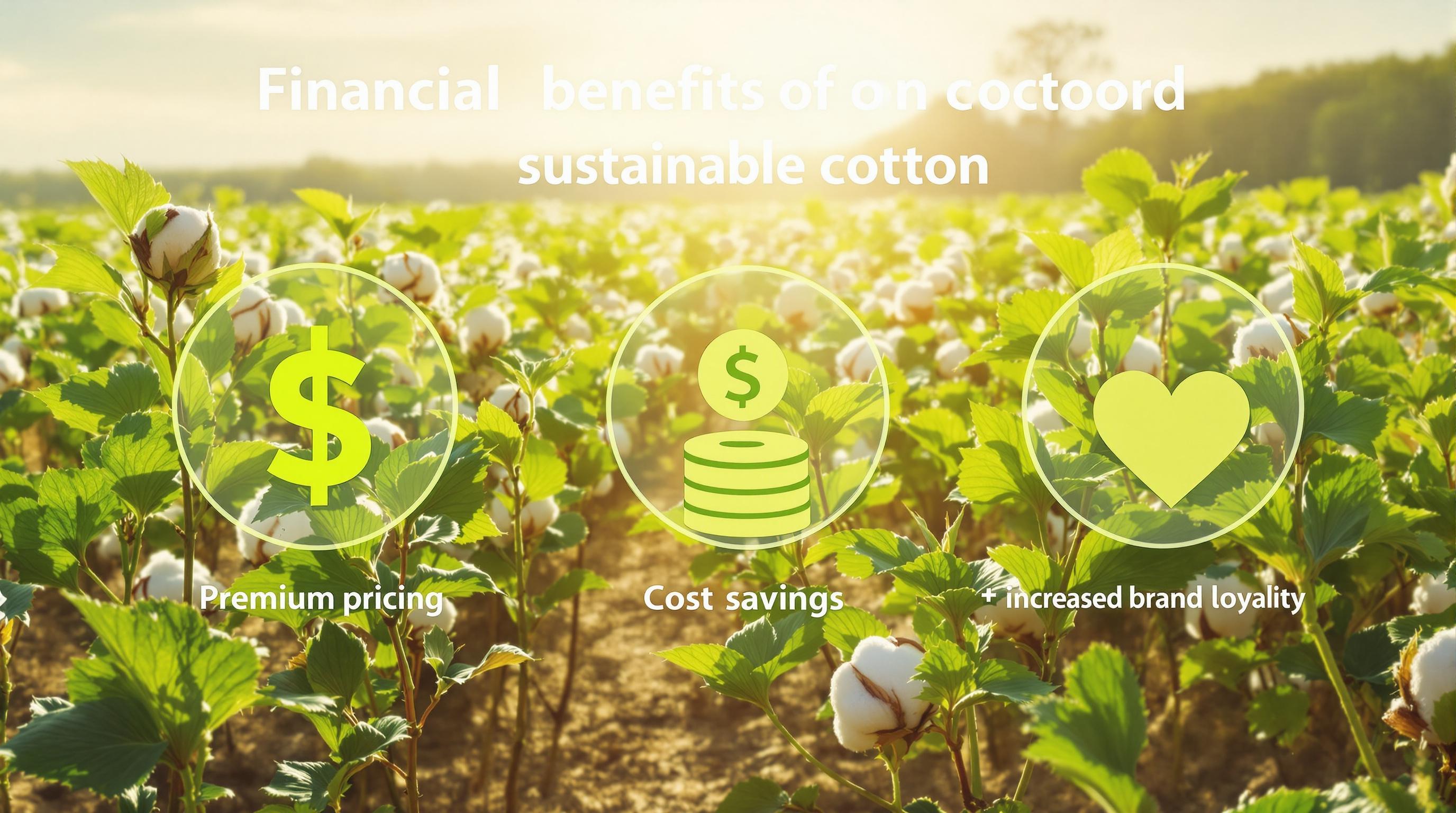Executive summary (TL;DR)
- Unlock the benefits of biotech cotton like pest resistance with Bt traits—cuts insecticide apps 50-70% and boosts yields 10-20% in high-pressure fields without extra costs.
- Herbicide-tolerant varieties streamline weed control, save 15-25% labor while reducing tillage for soil health gains in variable ground.
- Disease-resistant biotech lines minimize losses 20-30%; combine with lower inputs for sustainable profits, making it a no-brainer for long-term farming efficiency.
Related Post: For innovation insights, check out our post on Biotechnology Innovations in Cotton Farming for Enhanced Yields.
Biotech cotton isn't just lab stuff—it's the edge that lets you farm smarter, cutting costs and pushing yields without the old grind of constant sprays or tillage. You plant a Bt variety, and suddenly bollworms aren't eating your profits; go tolerant, and weeds don't own your time. For growers with years of balancing books and bugs, the benefits of biotech cotton mean real gains in efficiency and resilience, turning challenges into opportunities without overhauling your operation.
We're highlighting the advantages here, assuming you've got your basics like rotations and scouting solid. This is about how biotech delivers, backed by data from Cotton Incorporated, USDA trials, and extension from Texas A&M to Georgia. I'll pull from those studies, share how it plays out in real fields, and give you the framework to evaluate for your ground. No hype, just the facts that make biotech a tool worth using.
Pest Resistance: Cutting Chemical Dependence
Biotech cotton's Bt trait (Bacillus thuringiensis) produces proteins toxic to bollworms and budworms—cuts damage 80-90%, per Cotton Council. No more blanket insecticides; apps drop 50-70%, saving $20-40/acre, USDA data shows.
Why big win? Pests like Helicoverpa cost 10-30% yields untreated; Bt protects inside-out. Mississippi State trials: Bt varieties yield 15-25% more in infestation years.
For your farm: Stack with IPM—scout thresholds, release beneficials for synergy. One Delta op I know switched Bt, slashing sprays and boosting net 12%.
Consumer bonus: Less residue means cleaner lint, appealing to eco-buyers for 5-10% premiums.
Herbicide Tolerance: Weed Control Made Easy
Glufosinate or dicamba-tolerant lines let over-top apps without crop injury—cuts tillage 20-30%, preserving soil, per NRCS.
Advantages: Weeds like pigweed resist old chemistries; tolerance rotates modes, delaying resistance 15-20 years, Georgia extension. Labor savings 15-25%; no hand weeding.
Oklahoma State: Tolerant varieties up yields 10% in weedy fields due to clean competition.
Strategy: Mix with residuals like Warrant pre; spot-spray escapes. Avoid over-reliance—rotate crops to keep efficacy.
Off-topic: Market tie—clean fields from tolerance fetch better basis; use quality data for forward contracts.
Disease Resistance: Building In Immunity
Biotech lines with Fusarium or nematode resistance cut losses 20-30%, per Florida trials—roots stay healthy, water uptake steady.
Impact: Rot diseases drop set 15%; resistant genetics maintain vigor without fungicides.
Cotton Incorporated: Resistant varieties save $30-50/acre in treatments, plus 100 lbs of lint.
Fit for you: High-pH sands prone to nematodes—choose tolerant like PhytoGen; stack with rotations for 40% reduction.
Pro tip: Tissue test mid-season; adjust micros like Zn for synergy.
Yield and Quality Enhancements: More Bales, Better Fiber
Biotech boosts overall—10-20% higher yields average, USDA long-term. Stacked traits (Bt + tolerance) even maturity, holding mike 3.8-4.5 for premiums.
Why? Better health channels energy to bolls; length 1.15+, strength 30 g/tex common.
Texas AgriLife: Biotech in irrigated up 200 lbs/acre, quality up 5%.
Management: Pair with PGRs for balance—mepiquat evens, adding 5-8% uniformity.
Cost Savings and Efficiency: The Bottom Line Boost
Seed premium $50-100/bag, but ROI 2:1—saved sprays/tilage $40-60/acre, yields up $100+, per Purdue ag econ.
Dynamics: Fewer inputs cut environmental load 20-30%; sustainable certs add 10% value.
For scale: 500 acres, biotech nets $20K-30K extra yearly.
A Southwest grower adopted, costs down 15%, yields steady through drought, pays every season.
Sustainability Perks: Eco-Friendly Farming
Biotech reduces pesticides 37% globally, ICAC—less runoff, healthier ecosystems.
Benefits: Tillage cuts CO2 emissions by 20%; resistance lowers fungicide 25%.
WWF: Biotech cotton supports biodiversity, pollinators up 15% in fields.
Your edge: Cert like Better Cotton leverages for markets favoring sustainable, adding premiums.
Consumer: Safer, natural fibers without residue worries.
Risk Reduction: Weather and Pest Resilience
Biotech tolerates stress—drought traits hold yields 10-15% in dry, per Arizona trials.
Pest resistance buffers outbreaks; disease lines cut wipeouts.
Cotton Council: Stacked biotech reduces variability 12%, stabilizing income.
Strategy: Diversify varieties; test on 10% acres.
Off-topic: Business tool—use biotech data for insurance; lower risk profiles cut premiums 5-10%.
Adoption Challenges and Solutions
Seed costs high; start partial acres, scale with savings.
Resistance management: Rotate traits/modes to delay 10-15 years.
Regs: GMO labels in some markets; focus on benefits for acceptance.
Extension support: Trials help choose; co-ops share seed for trials.
Global Perspectives: Biotech's Worldwide Wins
India Bt adoption up yields 24%, reduced sprays 39%, per ISAAA model for U.S. ops.
Africa trials: Biotech cuts labor 20%, empowering smallholders.
For U.S.: 95% cotton biotech, but refine for local—Southeast disease focus, West drought.
Future Innovations: Next-Gen Biotech
CRISPR edits for custom traits—salt tolerance, better fiber—yields up 10-20% potential, per research.
Stacking more—quad traits for all-in-one protection.
Your prep: Stay on extension updates; trial new releases.
Wrapping the Biotech Case
The benefits of biotech cotton—pest control, weed ease, disease shield, yield lifts—make it a cornerstone for modern farming. It's not a replacement; it's an enhancement that keeps your operation efficient and profitable.
Actionable Takeaways
- Choose Bt for pests; cut sprays 50-70%.
- Go tolerant for weeds; save labor 15-25%.
- Select resistant for diseases; reduce loss 20-30%.
- Trial on 10% acres; monitor yields for 10-20% gains.


